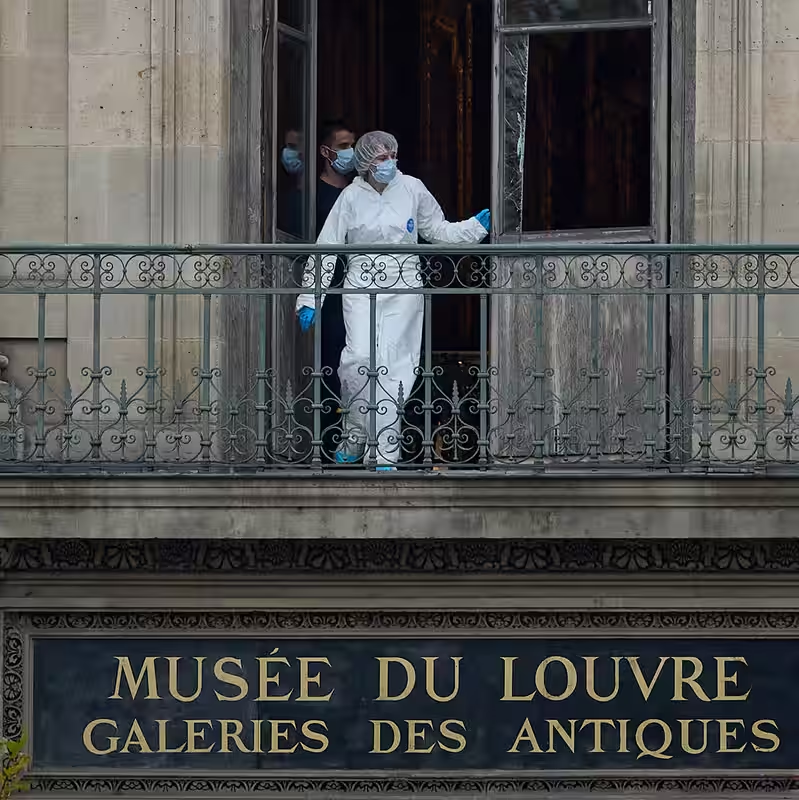Louvre Heist Joins Infamous Line of Museum Thefts
The recent Louvre heist—where thieves made off with royal tiaras and gem-laden jewelry—has stunned the world. But while the target was the Louvre, the tactic is anything but new. From the theft of the Mona Lisa to a gold toilet vanishing from a palace, museum heists have long blended audacity, cunning, and sometimes, sheer absurdity.
Why the Louvre Heist Feels Familiar
On Sunday, October 19, 2025, intruders slipped into the Louvre’s Apollo Gallery and stole eight pieces of historic jewelry, including Empress Eugénie’s crown—adorned with nearly 3,000 diamonds and 212 pearls. What makes this crime stand out isn’t just the location, but how it mirrors a global pattern: thieves increasingly targeting portable, high-value items they can dismantle and sell.
Notable Museum Heists That Preceded the Louvre Break-In
1. The Mona Lisa Heist (1911)
Vincenzo Peruggia, a former Louvre employee, simply walked out with Leonardo’s masterpiece tucked under his coat. The painting vanished for two years—turning it from a Renaissance portrait into a global icon.
2. American Museum of Natural History, New York (1964)
“Murph the Surf” and an accomplice climbed a fire escape and stole the Star of India sapphire and other gems. Poor security—open windows, broken alarms—made it easy. Most gems were recovered, but the Eagle Diamond remains lost.
3. Isabella Stewart Gardner Museum, Boston (1990)
Two men posing as police officers stole 13 works, including pieces by Vermeer and Rembrandt, valued at $500 million. It remains the largest art theft in history—and none of the works have ever been found.
4. The Scream, Oslo (1994)
Thieves broke in through a window during the Winter Olympics, leaving a mocking note: “A thousand thanks for your poor security.” The Edvard Munch masterpiece was recovered three months later after a sting operation.
5. Ashmolean Museum, Oxford (2000)
As fireworks lit the sky for the new millennium, a thief dropped through a skylight, filled the room with smoke, and stole Cézanne’s “View of Auvers-sur-Oise.” It has never resurfaced.
6. Vienna’s Saliera Theft (2003)
Alarm technician Robert Mang stole Benvenuto Cellini’s $60 million golden salt cellar by climbing scaffolding. He later sent ransom notes—until police traced his cellphone.
7. Paris Modern Art Museum (2010)
Vjeran Tomic, dubbed “Spider-Man,” scaled walls and stole five masterpieces—including works by Picasso and Matisse—because he “liked” them. None have been recovered.
8. Dresden’s Green Vault (2019)
Robbers detonated a firebomb to cut power, then stole $100 million in royal jewels. Though most were recovered, key pieces like a large diamond and an ornate brooch are still missing.
What Makes These Heists So Hard to Prevent?
Museums walk a razor’s edge between accessibility and security. As James Ratcliffe of the Art Loss Register put it: “You could prevent thefts by bricking up windows—but no one wants a museum to feel like a bank vault.”
Modern thieves exploit this balance. Some wear disguises; others strike during holidays or major events. Many target items that can be melted, recut, or sold on the black market—making recovery nearly impossible.
Is Any Museum Truly Safe?
Arthur Brand, a Dutch art crime investigator, said bluntly: “If people are capable of robbing the Louvre, museums will be scared no one’s safe.”
With open borders, digital anonymity, and global resale markets, today’s art thieves operate with more tools—and fewer consequences—than ever before.




